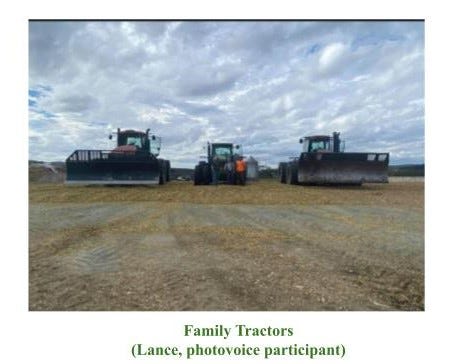Last Name Matters: Exploring Youth Rural Identity in Northern Vermont
Sarah Plaut, Master of Public Administration Candidate, University of Vermont
Keywords: rural youth, youth social experience, social status, rural policing
In 2021, I began a research project to revisit the lives of teenagers in the rural Vermont-Canada border region, building upon Professor Cheryl Morse’s work from the turn of the century. The fundamental goal remained unchanged – to better understand how teens navigate their social lives within rural spaces. Rural teenagers remain underrepresented in research, overshadowed by a prevailing belief that rural spaces cater primarily to young children, leaving the adolescent experience in these areas relatively overlooked (Jones, 1999; Vanderbeck & Dunkley, 2003).
Social constructions of rurality impact young people. The rural idyll, deeply ingrained for centuries, portrays the countryside as a haven for an idealized childhood closely connected to nature, emphasizing themes of freedom, safety, community, and an agrarian lifestyle. This notion contributes to the perception that rural areas offer children a longer and more sheltered phase of innocence away from urban pressures (Jones, 1999; Valentine, 1997). However, it also perpetuates gender norms and social control (Valentine, 1996). Conversely, the rural anti-idyll encompasses notions of rural dullness, horror, and deprivation, often stereotyping rural life as impoverished and monotonous (Rye, 2006). Media depictions reinforce these stereotypes and rely on a simplified rural-urban dichotomy, which belies the complexity of individual experiences (Vanderbeck & Dunkley, 2003). In reality, rural environments offer a multifaceted understanding of diverse individual identities (Valentine, 1997; Leyshon, 2008). Young rural people, in particular, navigate a nuanced space that challenges idealized notions (Powell et al., 2013).
This project’s research area spans two hundred square miles of northern rural Vermont and is bound by a school supervisory union we call St. Elizabeth (pseudonym). St. Elizabeth is made up of about nine thousand people, and the population is almost entirely white. The area is situated along the Canada border and is agricultural, with dairy farming taking up most of the viewed landscape. This research project employed a multi-method approach, including a survey, interviews, and Photovoice analysis, where young folks (ages 18-24) were asked to reflect on their growing up in St. Elizabeth.
“So there were the poor kids who didn't hang out with the popular kids… We all fit in like unless you were like – and I hate saying it this way – but unless you were that poor kid who didn't really fit in with people, you had no problem” (Lilly, interview participant)
To understand the social dynamics of St. Elizabeth's teenagers, I asked each interviewee to identify the social groups/cliques within their school. Their social groups seemed to be sorted into four categories: the “sports kids.” “rednecks,” “stoners,” and “weird kids.” This clique structure parallels Professor Morse’s earlier research, with cliques often tied to social status and class, where the “weird kids” are often perceived as the “poor kids.”
Findings consistently highlighted socioeconomic divisions in the community, with roughly half of the interview participants referencing familial reputation and class status.
In this small, predominantly white town, class status is both simplified and intensified due to the tight-knit nature of the community. Family reputation, often linked to income, occupation, and property ownership, plays a crucial role. Many young people emphasized the significance of their last names, which could either grant them trust and acceptance or make them vulnerable. For some, family names facilitated popularity and leniency in the community, while others brought discomfort and judgment. This class-based social design, where a few families wield economic power and influence, can lead to exclusion and adverse effects on the well-being of young individuals.
“... so like your reputation kind of goes along with your last name.” (Ella, interview participant)
In interviews with young people, their interactions with the police also emerged as a recurring theme despite not being asked questions on the topic. Some mentioned a lack of police presence, while others described more frequent encounters. Individual identities shaped these interactions; for instance, an upper-class white girl like Lilly had a relatively amicable relationship with the police, whereas others, like Tim (see quote below), faced more concerning encounters bordering on harassment. Rural police officers often possess a deep understanding of the community’s social dynamics, influencing how they interact with youth and how they are perceived. This complexity underscores the need for further research into rural policing to grasp these nuanced relationships and their implications better.
“The county sheriffs are by far the most aggressive people I've ever encountered. The first question they ask every time is how much you had to drink tonight… Most of us were very targeted by county sheriffs, very borderline, like, harassment territory. I think it's just because our area is just plagued with drunk driving.” (Tim, interview participant)
Overall, while rural spaces are often portrayed as idyllic settings for childhood, the reality is far more intricate, shaped by class structures, last names, and individual identities. St. Elizabeth’s community's close-knit nature exacerbates these factors’ impact, simultaneously simplifying and amplifying social and class structure within the community.
— Sarah Plaut
Author’s Bio









